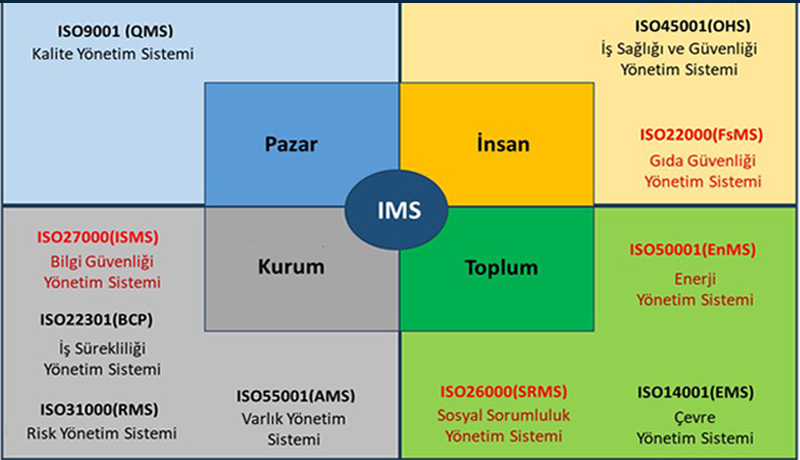
What is Digital Transformation?
Digital transformation is the strategic adoption of digital technologies. It is used to improve processes and productivity, deliver better customer and employee experiences, manage business risk and control costs. Digital transformation represents countless tools, solutions and processes. An effective strategy is one that is customized for each unique organization.
Modern iş ortamında rekabetçi kalabilmek için dijital dönüşüm bir zorunluluktur. Dijital bir çalışma alanı gibi faydalı teknolojileri stratejik olarak benimseme planı olmadan çok az kuruluş zamanın testine dayanabilir .
Why is digital transformation important?
Staying competitive in an ever-changing global marketplace depends on an organization's ability to adapt quickly through the adoption of new technologies. IDC predicts that worldwide spending on technologies and services that enable digital transformation will reach almost $2 trillion in 2022. Organizations that embrace digital transformation focus on engaging their customers in delightful experiences across multiple channels. Digital transformation plays a key role in:
Customer experience: Consumers today have more choices than ever before. This means businesses must not only deliver innovative products or services, but also deliver meaningful interactions and experiences that delight customers and increase brand loyalty. Think about how many options you have for food delivery these days. The reasons why you might choose one over the other may be directly tied to a company's digital transformation, whether it's an easy-to-use app, a seamless transaction, good customer service or fast delivery.
Employee experience: It's not just about providing your workforce with the latest apps and devices; It's about creating a simple, modern and more satisfying experience for your most valuable asset: your employees. Research has shown that companies that invest in employee experience have a more engaged, productive workforce, which translates into a better customer experience. Digital transformation can help organizations not only provide people with the tools they need, but also instant access to everything they need, from anywhere.
Process optimization: An organization's ability to deliver great employee and customer experiences depends on its ability to run smoothly on the backend. Streamlined workflows, digital processes, and automated tasks are all ways organizations create efficiency.
Product digitization: This means using technology to improve a product or service, such as smart connected or voice-activated devices. Digital transformation not only helps companies stay on the cutting edge of technology, but also creates the agile infrastructure necessary to constantly innovate and adapt to rapid change and consumer demands.
Who is responsible for digital transformation?
In the early days, digital transformation projects were often viewed as a pure IT initiative. But now, digital transformation is truly synonymous with business transformation. It is essential to consider this element for any digital transformation initiative. It is also important to show how a technology investment will directly impact profitability. IT and HR are leading digital transformation Digital transformation has forced IT to move out of the break/fix mindset and instead become a strategic business partner responsible for facilitating change across the organization. With customer and employee experiences so tightly intertwined, IT and HR now have a common stake in a company's digital transformation. It's no longer just about providing the latest technology. Nearly the same number of IT and HR executives surveyed (74 percent and 75 percent, respectively) feel personally responsible for improving the employee experience, according to an Economist Intelligence Unit report. CIOs and CHROs should work closely together to ensure existing technologies fully support people's needs while adhering to both HR and security policies. This includes shared goals, planning processes, cross-functional skill sets and new KPIs informing digital transformation While IT and HR share responsibility for planning and implementing employee experience and digital transformation initiatives, it's important for employees to be clear about their needs and wants. One way to do this is to conduct regular employee surveys or focus groups on an ongoing basis.
Benefits of a successful digital transformation strategy
Increased mobility: Not only do consumers spend several hours a day on mobile devices, but employees are also tethered to smartphones, tablets, and laptops. Agile companies need mobile solutions that offer the same experience people have in the office. Many digital transformation projects take mobility as a central theme. Extending end-user experiences to include mobile platforms is essential for the modern business. Companies across industries leverage mobile capabilities to increase productivity , improve operational efficiency, and improve satisfaction rates.
Data security: Effective digital transformation projects can support an organization's commitment to data security, especially in the age of connected devices and big data. Considering their respective data sovereignty responsibilities, stakeholders should be vigilant in protecting user information, especially when entrusted with large amounts of sensitive information. Globally, companies may be subject to a range of international privacy laws. These should be reflected in any transformation strategy.
Improved user experience: Businesses are beginning to embrace new technologies not only for their functionality, but also for their ability to increase employee productivity through simpler interfaces and more intuitive interactions. Enterprise applications with user-friendly user interfaces can make it difficult for employees, even if the backend is efficient.
What are the common challenges of digital transformation?
Inability to lead with strategy Digital transformation is not a one-time project. This is an ongoing process that must be constantly nurtured and developed. Implementing technology without looking at how it fits into the bigger picture can create more challenges than benefits. Digital transformation should start with a vision and every project should start from this vision. When considering your vision, it is imperative to keep in mind business goals and objectives and how a digital transformation strategy can support them. In order for this action to work, the right leadership approach and the right strategy must be chosen in the company. When proposing any new project, it is important to show how it will support the business and impact profitability. With leadership buy-in assured, you can avoid any budget challenges that will impact your project. While in the past IT was solely responsible for digital transformation, this is no longer the case. This has become a cross-functional effort across the organization, so both leaders and employees need to be involved. When leaders implement a new piece of technology without engaging with the people who actually use the solution on a daily basis, they risk investing in a tool that doesn't truly meet the company's needs. Leaders need insight into end-user experiences to ensure the solution works well and doesn't introduce new challenges.
In the early stages of a new investment, decision-makers should ask employees about their experiences with the current system and get insights on how the process can be improved. Then, during the implementation of the new solution, stakeholders should continue to seek feedback from people actively using the technology. Over time, the insights gained from this feedback loop will aid in additional transformations, contributing to the continuous improvement cycle.
